This no-knead baguette recipe delivers 2 homemade loaves of French bread with a crisp crust and a chewy, airy crumb. A long, hands-off overnight rise results in a deep flavor, turning an everyday meal into something special.

French baguettes are often regarded as bread perfection, with dark, crisp crusts and a soft and flavorful crumb. In fact, there’s an annual competition in Paris to crown the best in the country. While most home bakers aren’t reaching for competition-worthy baguettes, there’s something satisfying about creating a rustic version at home that captures the essence of an award-worthy baguette.
This no-knead baguette recipe simplifies the process, relying on a long, slow fermentation to do most of the work and develop deep flavor. Pouring water into a hot pan inside the oven creates steam, for a golden crust that crunches with every bite.
These rustic baguettes pair beautifully with simple toppings like olive oil, jam, honey, or cheese. Enjoy them fresh for breakfast, make Pan Bagnat or an Antipasto Chicken Sandwich for lunch, slather them with Olive Tapenade at cocktail hour, or dip slices into a bowl of hearty soup or Basque Chicken and Peppers for dinner. If there’s any left the next day, they make excellent Tomato Bruschetta.
Table of Contents
What is a Baguette?
A baguette is a long, thin French bread with an airy, flavorful crumb and crisp crust. There are strict requirements in French law for bread to be classified as an official baguette de tradition Française. It must contain only four ingredients: flour, water, salt, and yeast. Bakeries must prepare them fresh on site—no additives and never frozen. They must measure 50cm long (about 20 inches) and weigh 250 grams (8.8oz) after baking.
This homemade version is nowhere near as strict, but mostly complies with the definition. These baguettes only measure 15 inches to fit in a home oven, but they turn out with a golden crisp crust and a light, airy crumb.
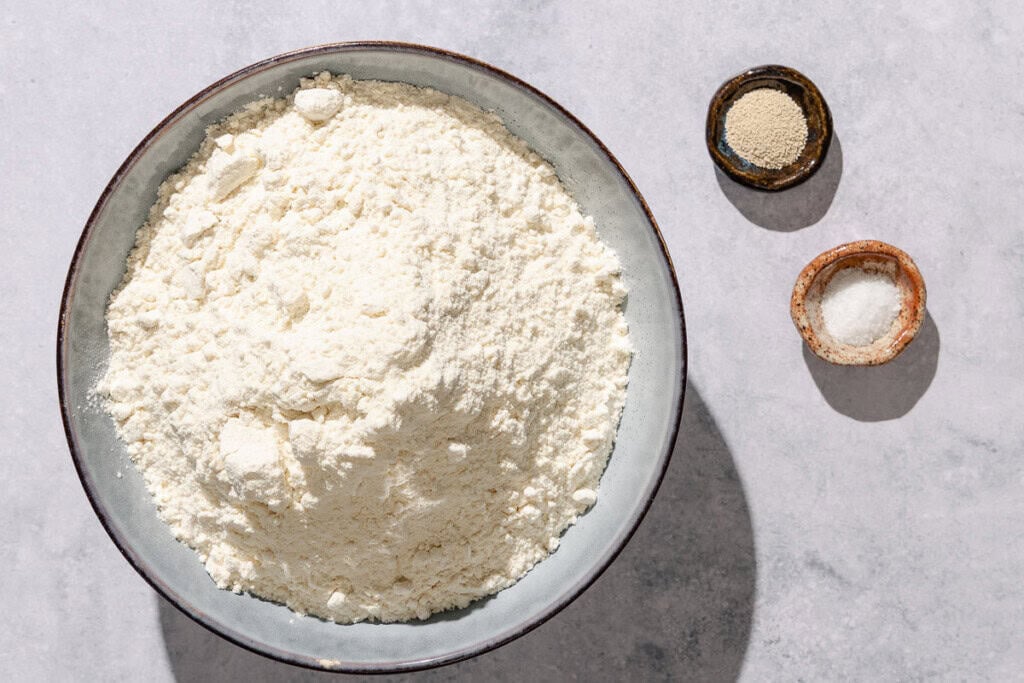
Ingredients for Baguettes
These easy, no-knead baguettes stick to the traditional four ingredients:
- All-purpose flour: Baguettes made with all-purpose flour instead of bread flour are airier and have a softer crumb. If you’re not used to working with very sticky bread doughs, use bread flour instead for an easier time shaping the baguettes.
- Salt: I use light and flaky Diamond Crystal kosher salt. If you’re using Morton’s or sea salt, reduce the amount to 3/4 teaspoon.
- Instant yeast: Instant yeast is convenient because you can add it directly to the dry ingredients without activating it first. If you only have active dry yeast on hand, you can still use it. Keep scrolling for the full instructions.
- Water: Is used to hydrate the dough. Keep the temperature between 100°F and 110°F. If it’s too hot it can kill the yeast and prevent the dough from rising.
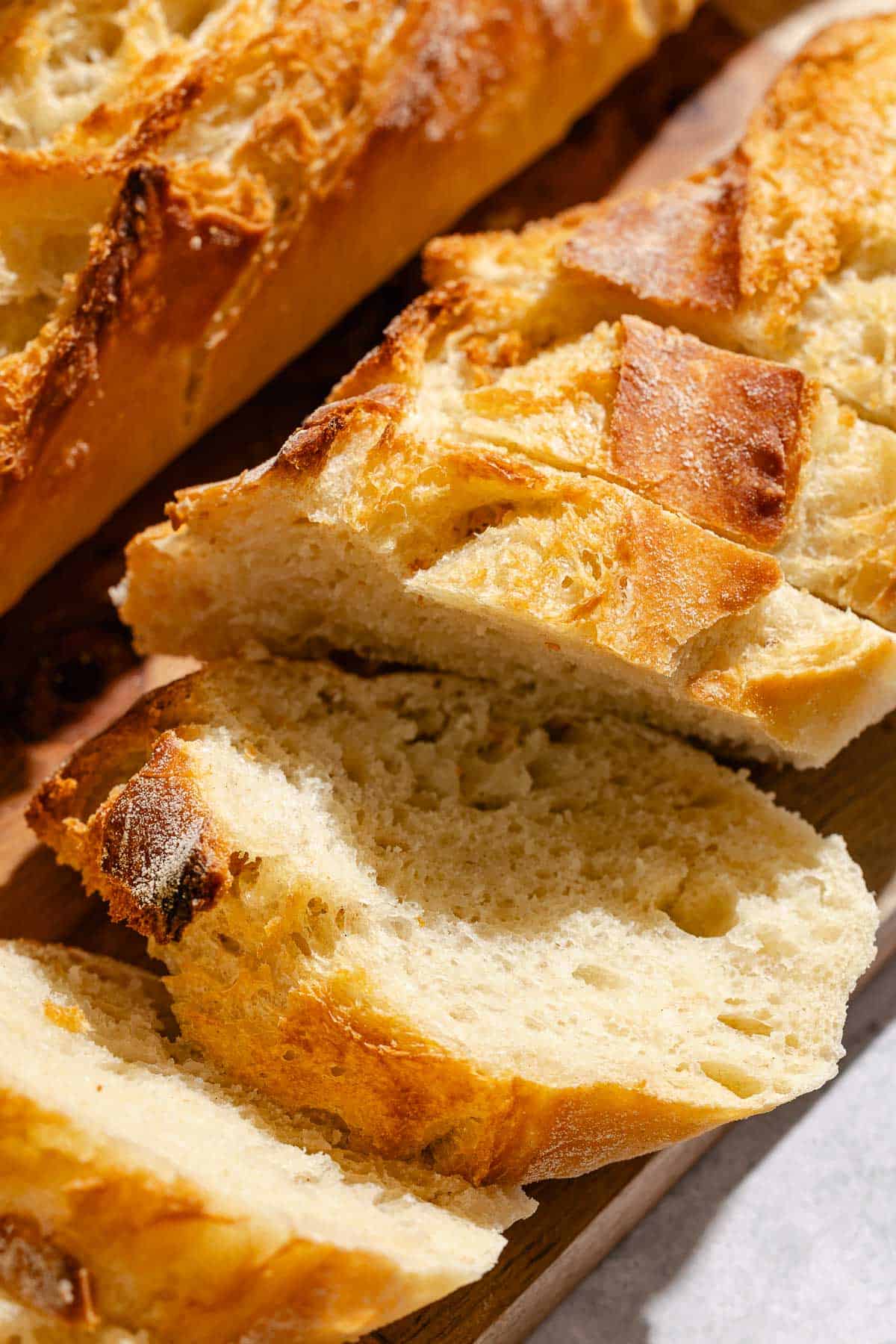
How to Make Baguettes
Working with sticky bread dough can be frustrating if you’re not used to it. I embrace the rustic look, shaping the baguettes by rolling the dough into a log and letting them rise right in the pan. The dough rises slowly overnight, so mix it the evening before you plan to bake and enjoy your baguettes. Here’s how to make homemade baguettes:
- Mix the dough. In a large mixing bowl, combine 3 cups (375g) all-purpose flour, 1 1/4 teaspoons kosher salt, and 1/4 teaspoon instant yeast. Pour in 1 cup plus 2 tablespoons (265ml) room temperature water and stir until a shaggy dough comes together and no dry flour remains.
- Let the dough rise. Cover the bowl and leave it to rise at room temperature overnight or for 12 to 18 hours. The dough will rise to 2 or 3 times its original volume, and lots of bubbles should be visible on the surface. There is some variability to this process based on the ambient temperature. Rise time will be shorter in warmer environments and longer in colder ones; If it begins to collapse the dough has over-proofed.
- Prepare a workspace. Dust your hands and a work surface with flour. Use a flexible dough scraper to transfer the dough out of the bowl and onto the floured surface. Use a bench scraper or a knife to divide the dough in half.
- Shape the baguettes. Gently stretch one half of the dough into a rough square about 8 inches wide. Roll the square into a log and pinch the seams together. Sprinkle the work surface and the dough with more flour if needed. With the seam side down, place both palms on the center of the log, and gently roll it, gradually moving your hands outward, to stretch the dough into a 15-inch log. Place the baguette in a baguette pan. Repeat with the second ball of dough.
- Let the baguettes rise. Cover the baguettes with lightly greased plastic wrap. Let them rise until they look puffy, about 1 to 2 hours. They won’t double in bulk. If you poke the dough with your finger, the dough should slowly spring back but still leave a bit of an indent. If it springs back quickly and completely, let it proof longer.
- Preheat the oven. About 30 minutes before the dough is done proofing, set an empty cast iron skillet on the floor of the oven, arrange a rack in the middle of the oven, and preheat it to 450°F.
- Score the loaves. Use a bread lame or a sharp, serrated knife, make 4 to 5 diagonal slashes or one long slash down the middle of each baguette.
- Bake the baguettes. Remove the plastic wrap and transfer the baguette pan onto the middle rack of the oven. Wearing oven mitts, carefully pour about a cup of water into the cast iron pan and quickly close the oven to trap the steam. The steam will rise quickly when the water hits the pan. Bake the baguettes for 25 to 30 minutes, or until deep golden brown.
- Cool the baguettes. Remove the baguettes from the pan and cool on a wire rack completely before slicing.
Recommended Equipment for Baking Baguettes
Shaping and baking baguettes at home can be challenging, but a few pieces of equipment make the process more manageable and help achieve beautiful baguettes to be proud of. If you were going to buy just one, I’d get the baguette pan. It was essential to get nicely shaped and evenly baked baguettes.
- Baguette pan: Traditionally, baguettes rise between folds in a floured couche, a canvas cloth. However, this increases the risk of deforming the baguettes because they can stick to the fabric, and you need to handle them more to transfer them to a pan to bake. I let the shaped baguettes rise directly in this baguette baking pan, which keeps their shape while rising and goes straight into the oven for baking.
- Flexible Dough Scraper: Dough sticks less to dough scrapers than to your hands. It’s a great tool for transferring the risen dough out of the bowl and onto the counter and moving it around the counter.
- Metal Bench Scraper: A metal bench scraper has a sharp edge, making it easy to divide the dough.
- Serrated Bread Knife or Bread Lame: A good bread knife lets you easily slice your baguettes without squishing or tearing them. Professional bakers use a razor blade, called a breadmaker’s lame, to do the same thing.
Tips for Baking with Yeast
My favorite instant yeast is Saf Red Instant Yeast. It’s never failed for me, and I love the flavor, especially in slowly fermented doughs like this one. It’s a big bag, but it keeps for at least a year in an airtight container in the fridge or freezer.
If you already have some active dry yeast on hand, you can substitute 1/2 teaspoon for the instant yeast.
With the amount of water in this dough, you don’t actually need to bloom the yeast. But if you prefer to check that the yeast is alive, bloom it in water before until it is dissolved and bubbly, about 5 minutes, then add it to the dough.
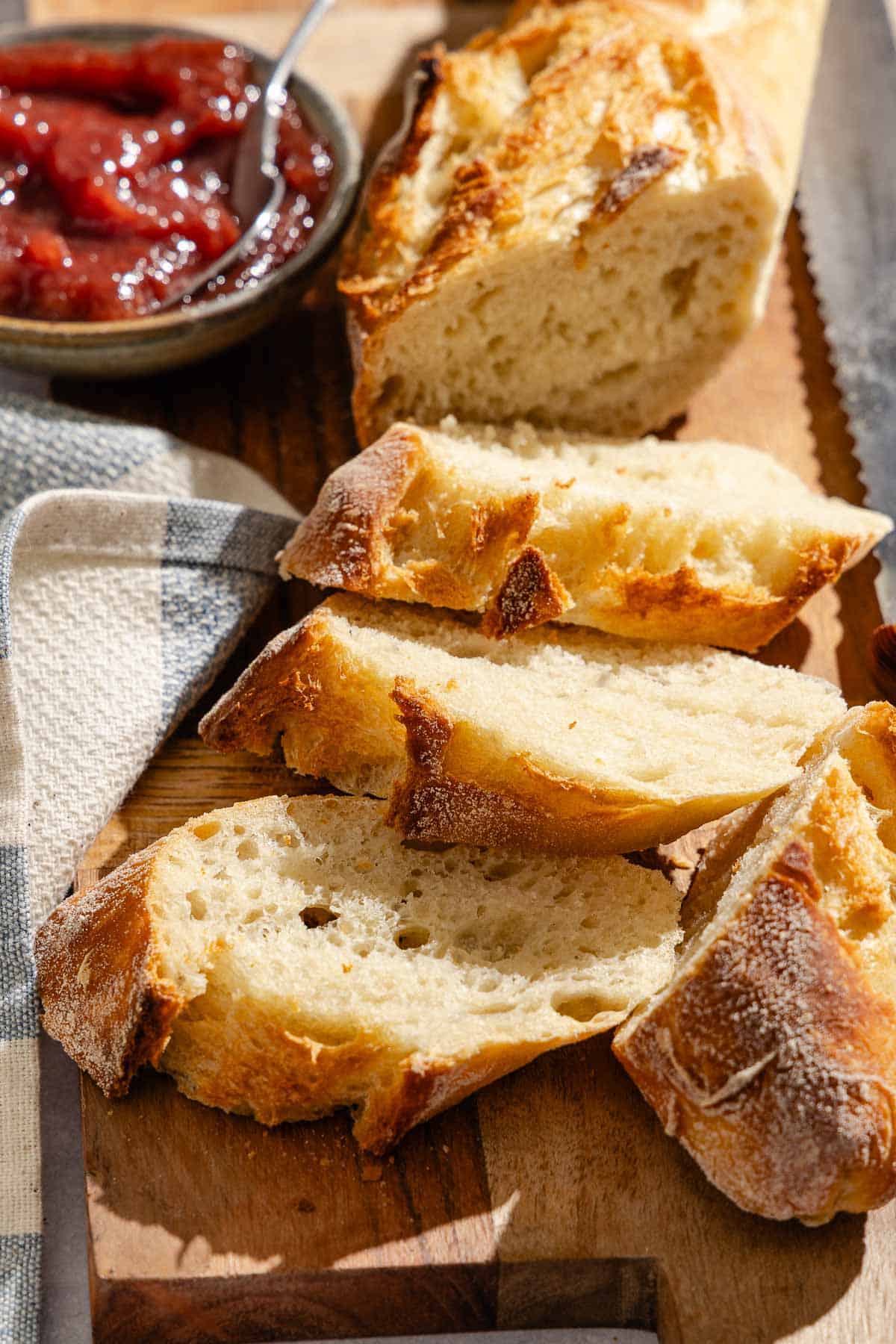
How to Store and Freeze Baguettes
The baguettes are best the day they are baked. They can be stored on the counter in a paper bag or beeswax wrap for a day or two. If you won’t be able to finish both baguettes in that time frame, you can keep one fresh and freeze the other. Avoid refrigerating the bread, as it will stale faster.
To freeze, let the baguettes cool completely. Wrap each baguette in two layers of plastic wrap and freeze for up to three months. To defrost, let the wrapped baguettes sit on the counter until they reach room temperature, about 1 to 2 hours. Refresh the crust by baking it for about 5 minutes at 350°F.
How to Revive Stale Bread
- Rinse the whole baguette under water and then bake it in the oven at 325°F for 5 to 7 minutes.
- This partially reverses the staling process, softening the crumb and recrisping the crust.
- It’s best to do this just before you plan to consume the bread since the effects are temporary, and the bread will harden again.
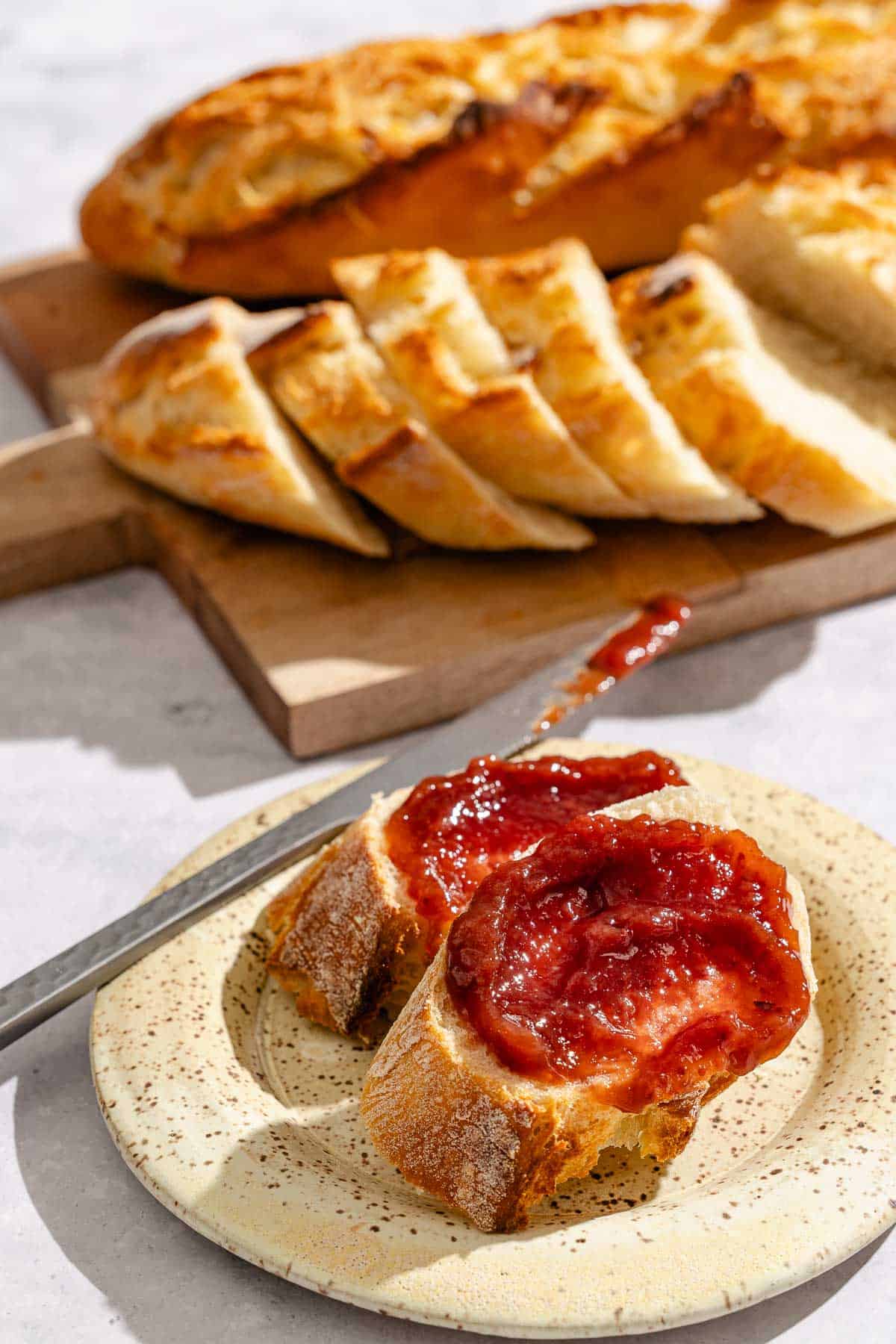
What to Do with Stale Bread
Day-old baguettes make crisp bruschetta, crostini with roasted peaches or smashed peas, or fancy ricotta toast. It’s also ideal for soaking up the sweet cinnamon and citrus-infused milk to make torrijas, a Spanish version of French toast.
As the bread gets staler, don’t throw it out. Use it to make croutons for Caesar salad, Panzanella, or this ground turkey skillet dinner. Stale bread is a great way to thicken a soup, like Italian pappa al pomodoro or Spanish salmorejo.
More Bread Recipes
Browse all Mediterranean recipes.
Visit Our Shop.
French Baguettes

Ingredients
- 3 cups all-purpose flour (375g)
- 1 1/4 teaspoons kosher salt
- 1/4 teaspoon instant yeast
- 1 cup plus 2 tablespoons room temperature water (265ml)
Instructions
- Mix the dough. In a large mixing bowl, combine the flour, salt, and yeast. Pour in the water and stir with a wooden spoon until a shaggy dough comes together and no bits of dry flour remain.
- Let the dough rise. Cover the bowl and leave it to rise at room temperature overnight or for 12 to 18 hours. The dough will rise to 2 or 3 three times its original volume, and lots of bubbles should be visible on the surface. There is some variability to this process based on the ambient temperature. Rise time will be shorter in warmer environments and longer in colder ones; If it begins to collapse the dough has overproofed.
- Prepare a work space. Dust your hands and a work surface with flour. Use a flexible dough scraper to transfer the dough out of the bowl and onto the floured surface. Use a bench scraper or a knife to divide the dough in half.
- Shape the baguettes. Gently stretch one half of the dough into a rough square about 8 inches wide. Roll the square into a log and pinch the seams together. Sprinkle the work surface and the dough with more flour if needed. With the seam side down, place both palms on the center of the log, and gently roll it, gradually moving your hands outward, to stretch the dough into a 15-inch log. Place the baguette in a baguette pan. Repeat with the second ball of dough.
- Let the baguettes rise. Cover the baguettes with lightly greased plastic wrap. Let them rise for until they look puffy, 1 to 2 hours. They won’t double in bulk. If you poke the dough with your finger, the dough should slowly spring back but still leave a bit of an indent. If it springs back quickly and completely, let it proof longer.
- Preheat the oven. About 30 minutes before the dough is done proofing, set a cast iron skillet on the floor of the oven, arrange a rack in the middle of the oven, and preheat it to 450°F.
- Score the loaves. Use a bread lame or a sharp, serrated knife, make 4 to 5 diagonal slashes or one long slash down the middle of each baguette.
- Bake the baguettes. Remove the plastic wrap and transfer the baguette pan onto the middle rack of the oven. Wearing oven mitts, carefully pour about a cup of water into the cast iron pan and quickly close the oven to trap the steam. The steam will rise quickly when the water hits the pan. Bake the baguettes for 25 to 30 minutes, or until deep golden brown.
- Cool the baguettes. Remove the baguettes from the pan and cool on a wire rack completely before slicing.
Notes
- Visit our shop to browse quality Mediterranean ingredients including olive oils, honey, jams, and spices.
- The nutritional value for this recipe is per loaf.
- Can I use a stand mixer? You can use a stand mixer to mix the dough if you like, but hand-mixing is sufficient for this recipe.
- To Use Active Dry Yeast: You can substitute 1/2 teaspoon active dry yeast for the instant yeast. With the amount of water in this dough, you don’t actually need to bloom the yeast before adding it to the dough. But if you prefer to check that the yeast is alive, bloom it in about 1/3 cup of the called-for water until the yeast is dissolved and bubbly, about 5 minutes.
- Types of Salt: I use Diamond Crystal kosher salt, which has a light, flaky texture. If you’re using Morton’s kosher salt or sea salt, I recommend reducing the amount to 3/4 teaspoon.
- How to Store Baguettes: The baguettes are best the day they are baked but can be stored on the counter in a paper bag or beeswax wrap for one to two days. If you won’t be able to finish both baguettes in a day or two, you can keep one fresh and freeze the other. Avoid refrigerating the bread, as it will stale faster.
- How To Freeze Baguettes: Let the baguettes cool completely. Wrap each baguette in two layers of plastic wrap and freeze for up to three months. To defrost, let the wrapped baguettes sit on the counter until they reach room temperature, about 1 to 2 hours. Refresh the crust by baking it for about 5 minutes at 350F.
- How to Refresh or Re-crisp Stale Baguette: Rinse the whole baguette under water and then bake it in the oven at 325°F for 5 to 7 minutes. This can partially reverse the staling process, softening the crumb and recrisping the crust. It’s best to do this just before you plan to consume the bread since the effects are temporary, and the bread will harden again.
- How to Use Fresh Baguettes: While the baguettes are fresh, serve them as an appetizer with some olive oil bread dip or alongside a hearty meal. Baguette slices are perfect for dipping into the flavorful broth of this chicken vegetable soup or for soaking up the spiced tomato sauce on these baked chicken thighs.
Nutrition
Bundle and Save!
Get the flavor party essentials to start your Mediterranean Diet Journey today!




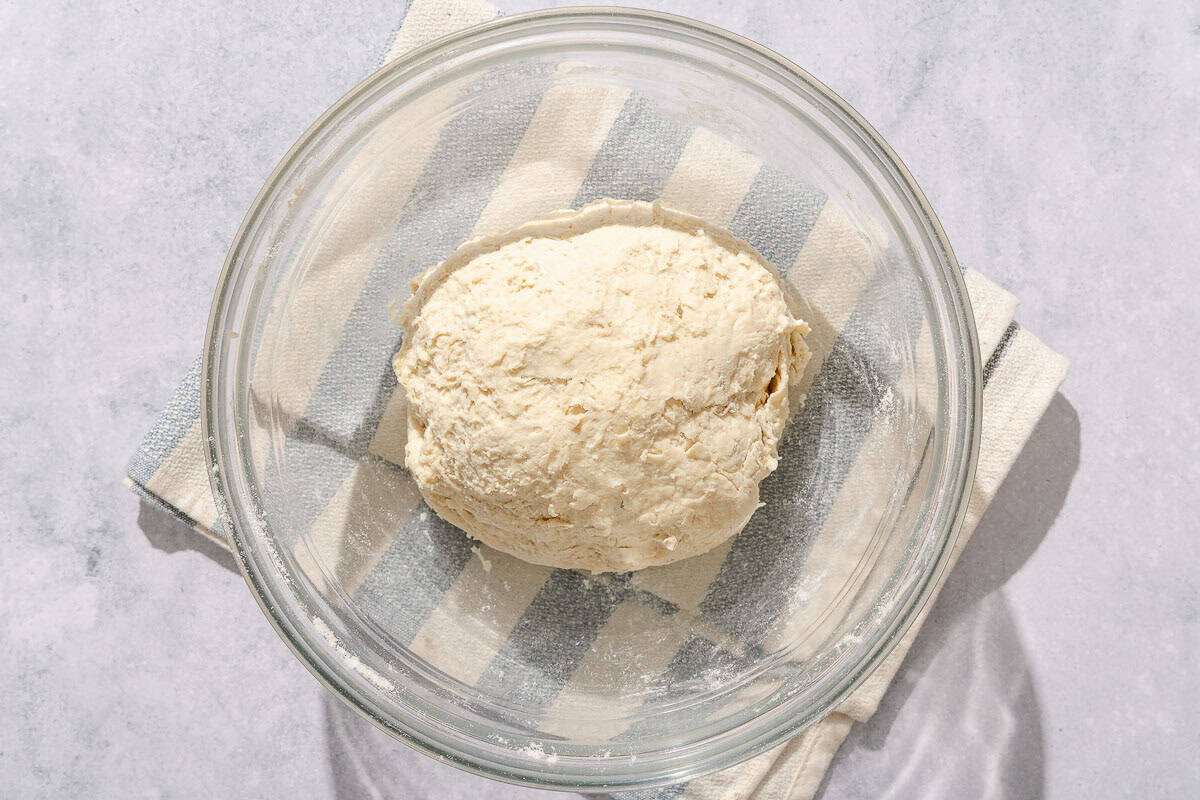
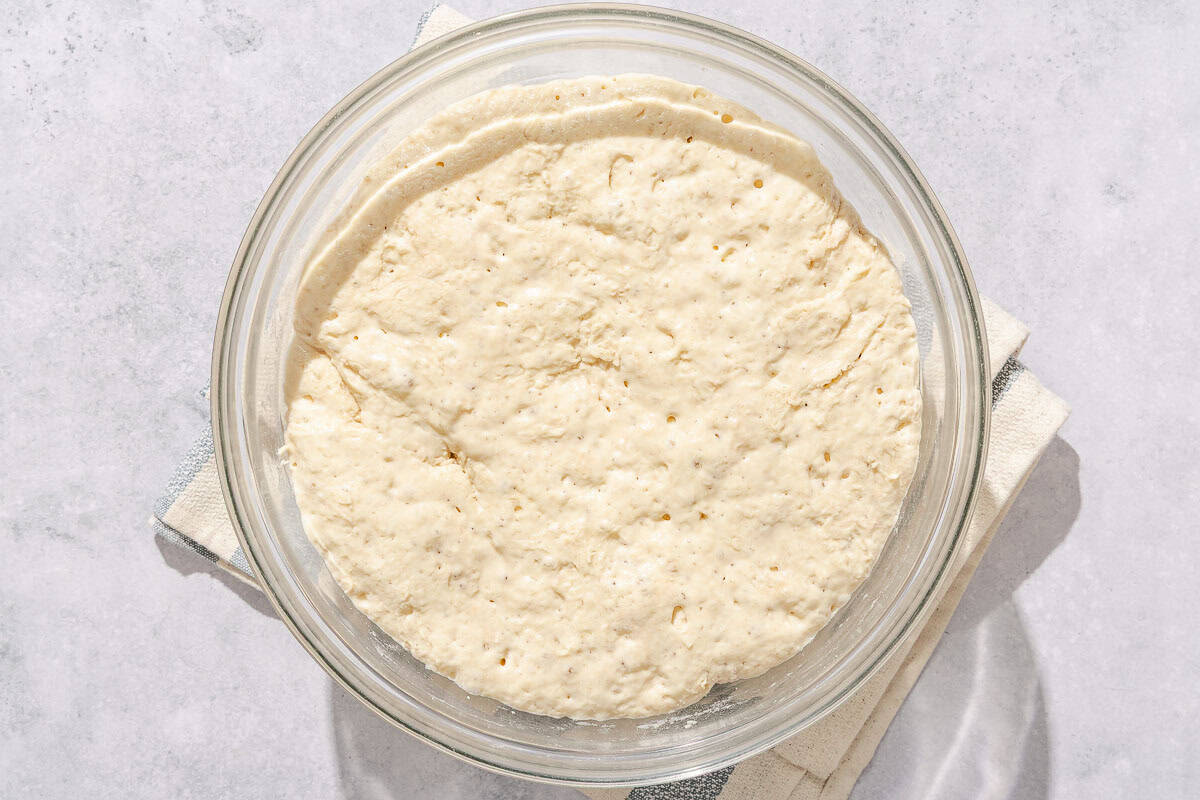
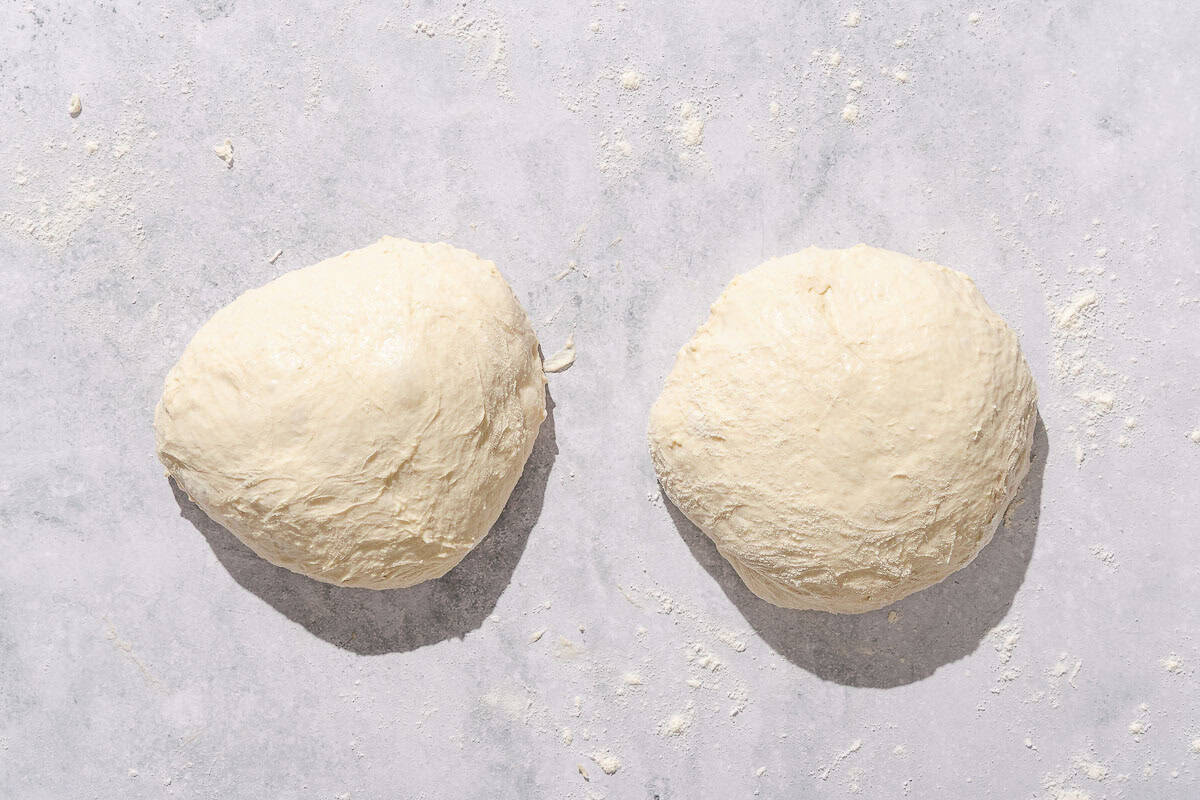
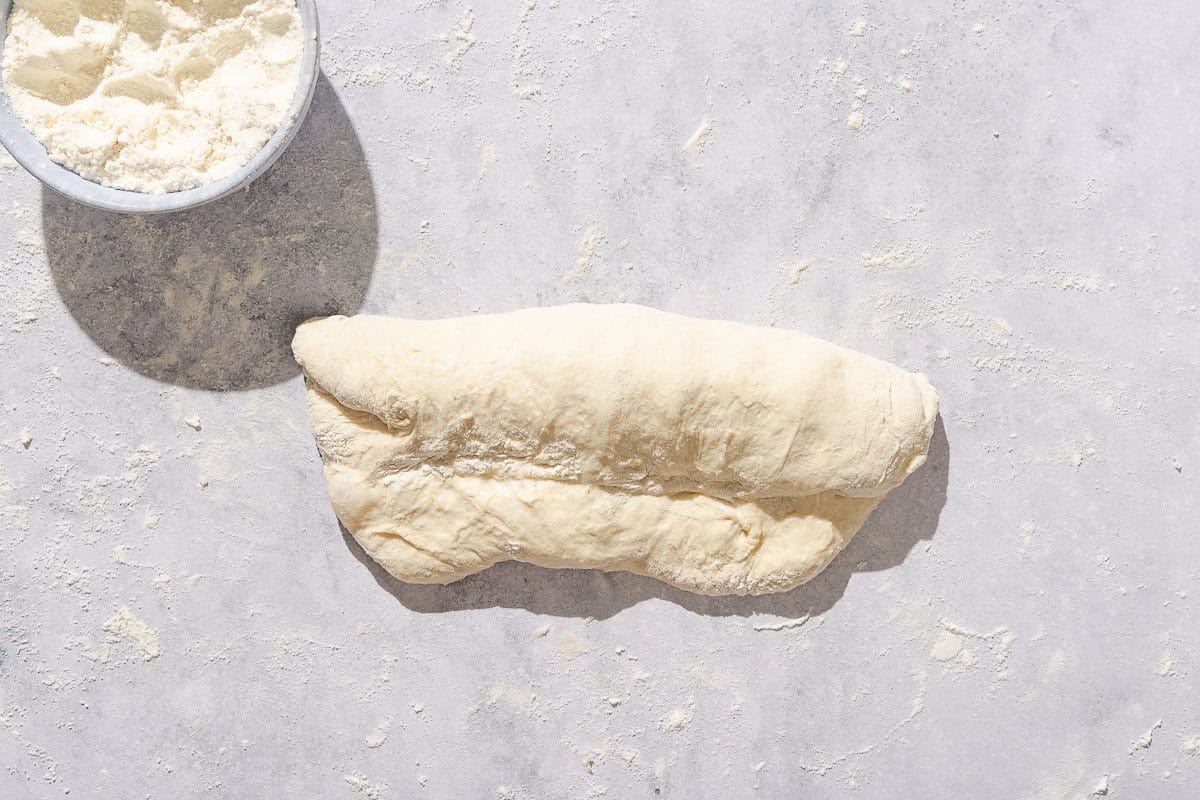
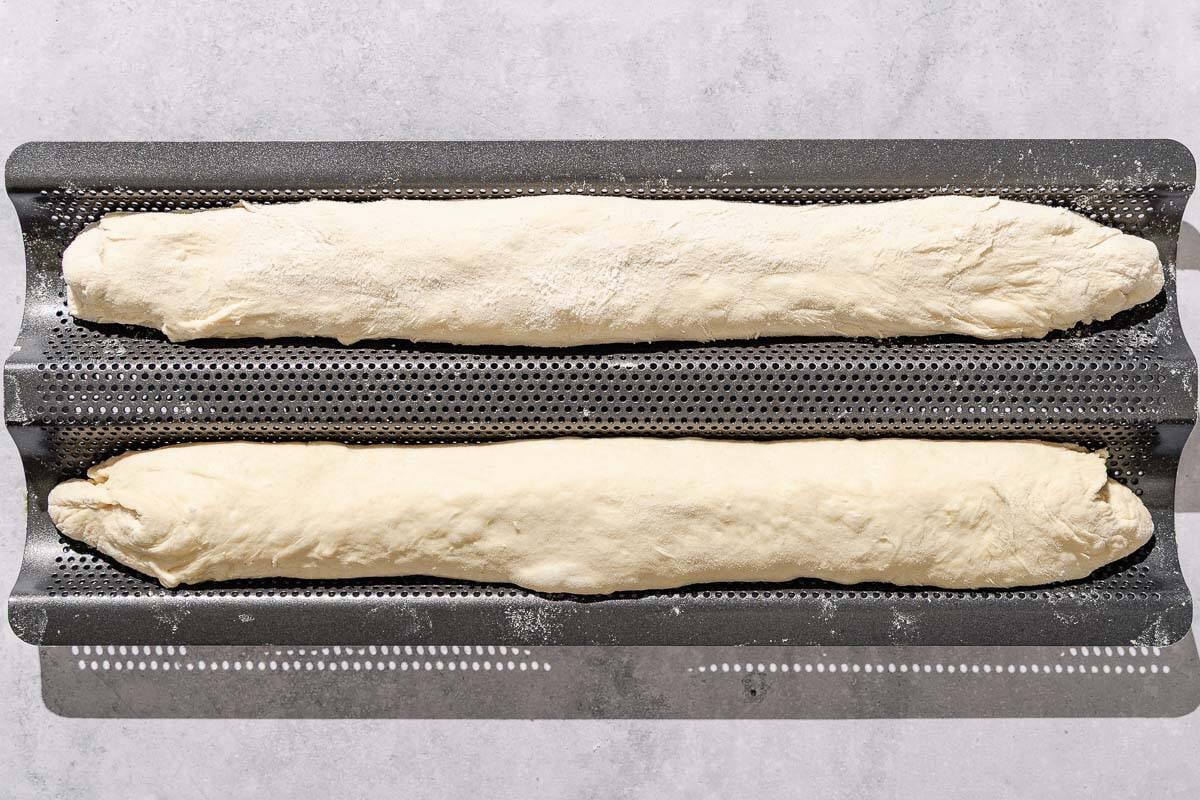
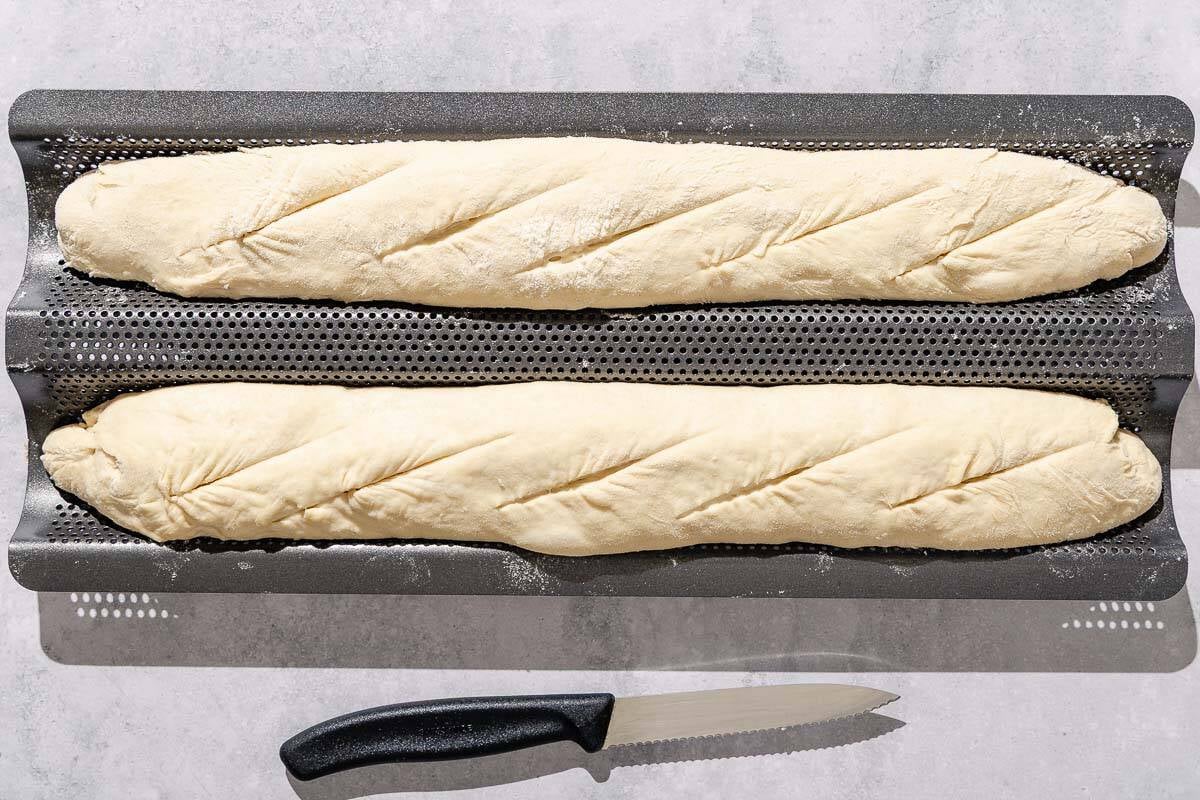
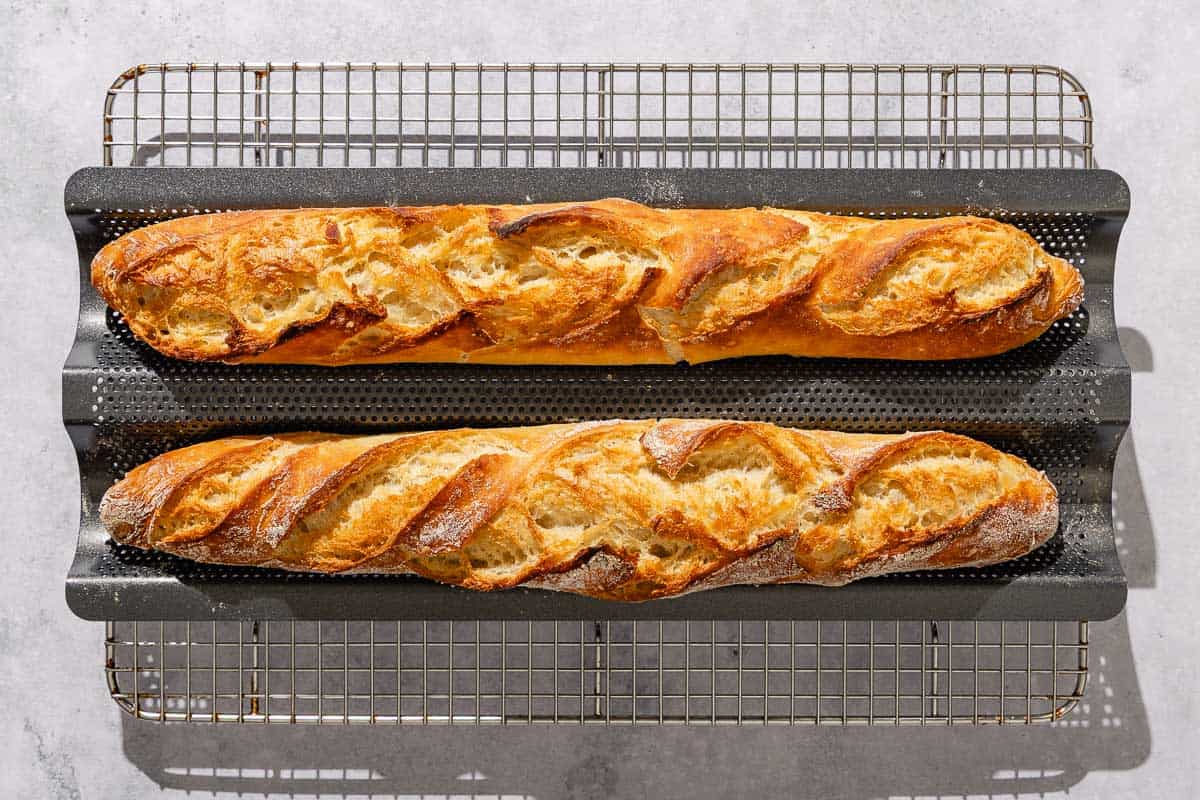

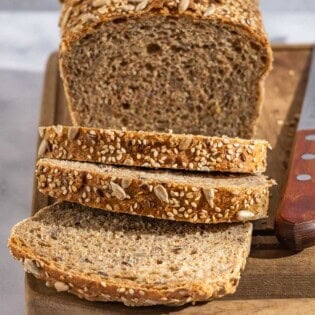



Absolutely fantastic. Perfect on the first try.
Can I make your bread recipes with Krusteaz gluten free flour?
Thank you!
Hi, Linda. Unfortunately, we haven’t had the chance to test this one with gluten free bread, so it’s hard to say. If you decide to give it a go, please stop back and let us know how it went! We’d love to know if it worked out.